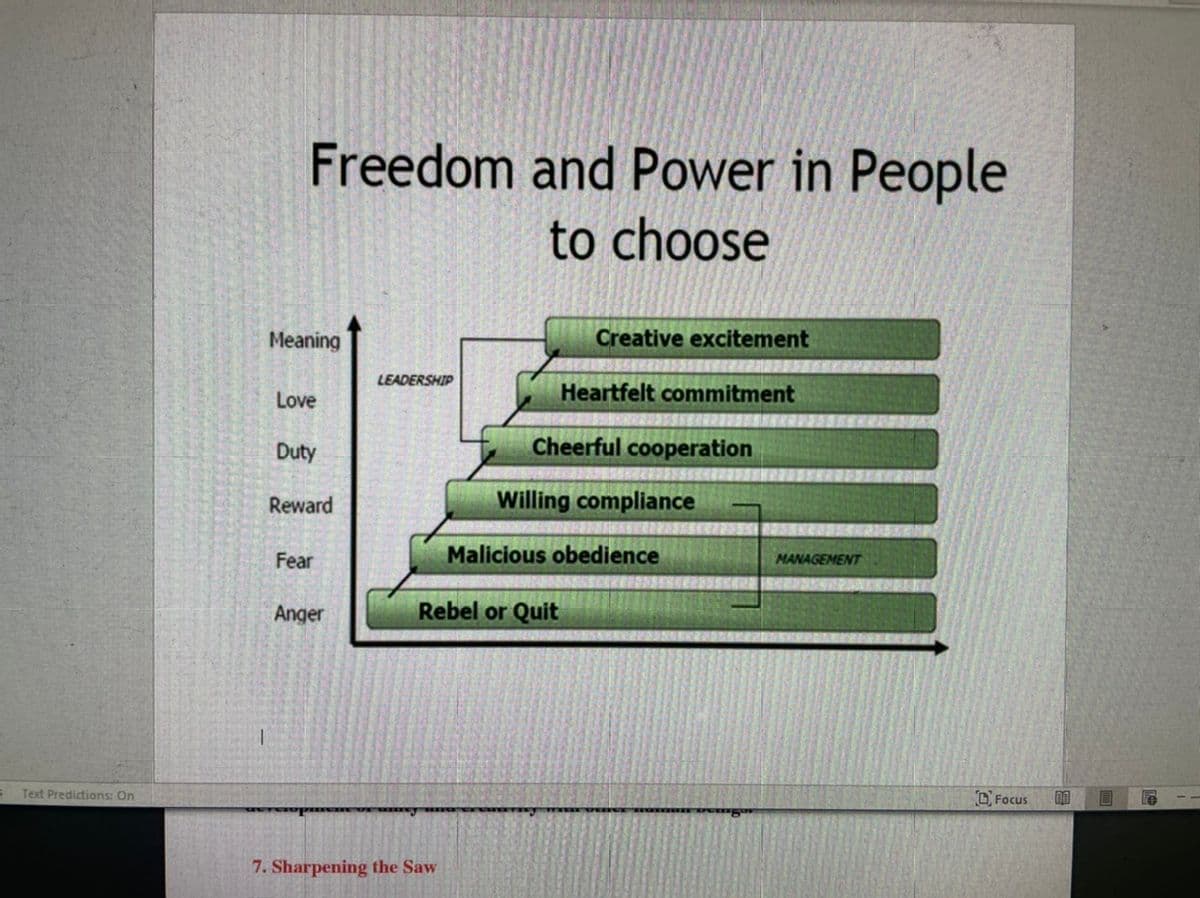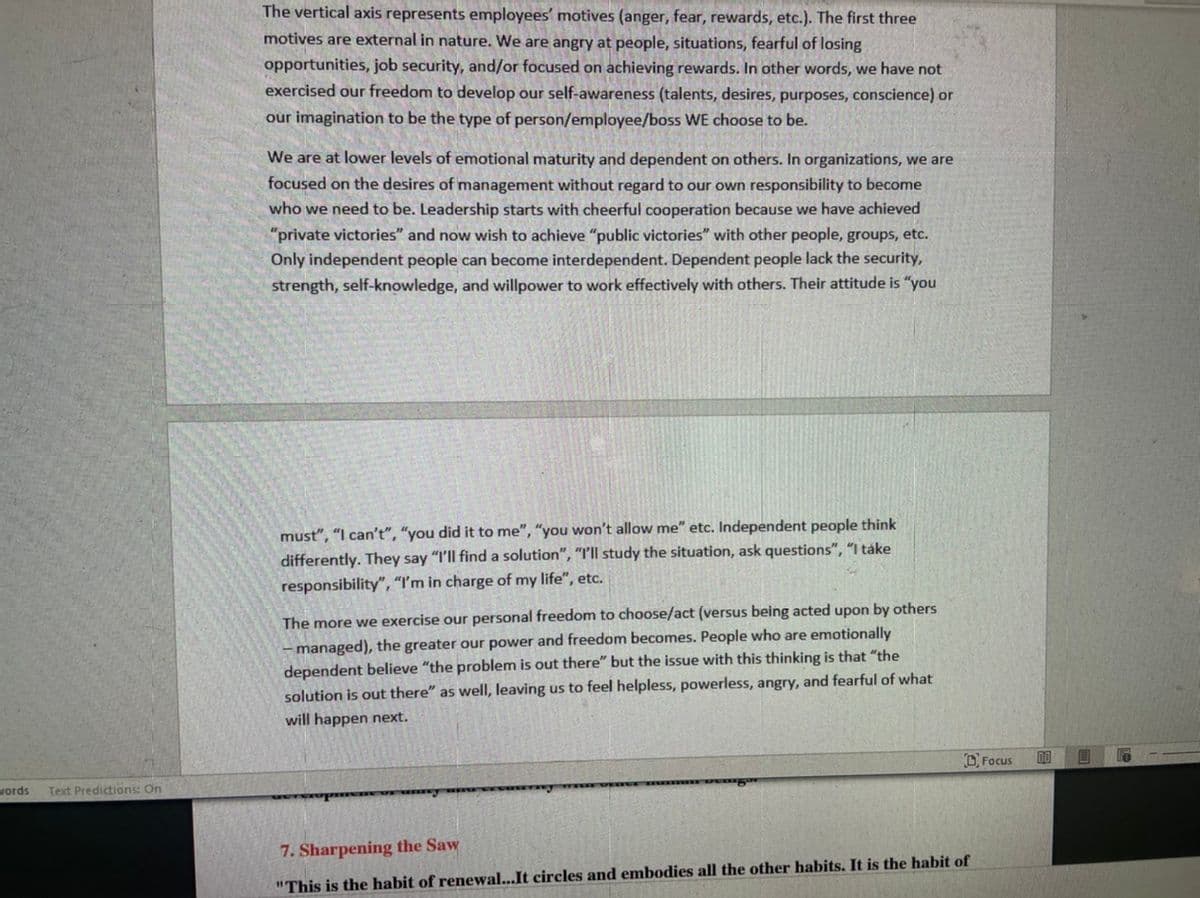Part 2: Motivation & Empowerment 2. read the attachment (levels of initiative) and then: a. Identify and explain at least three differences between extrinsic and intrinsic motivators/ rewards. b. Referring to the attachment (levels of initiative), explain why higher levels of initiative (leadership) require intrinsic motivators rather than extrinsic motivators. c. Using the theories and language in chapter 8 in the textbook, explain your external motivation and internal motivation. Please include the elements language of the theories chosen. d. One major objective for this assignment is self assessment of your level of initiative (leadership vs management within your organization department context. What is your level of initiative according to the attachment? Please include a specific improvement plan how will you take greater initiative even if external rewards are not present internal rewards only?
Part 2: Motivation & Empowerment
2. read the attachment (levels of initiative) and then:
a. Identify and explain at least three differences between extrinsic and intrinsic motivators/ rewards.
b. Referring to the attachment (levels of initiative), explain why higher levels of initiative (leadership) require intrinsic motivators rather than extrinsic motivators.
c. Using the theories and language in chapter 8 in the textbook, explain your external motivation and internal motivation. Please include the elements language of the theories chosen.
d. One major objective for this assignment is self assessment of your level of initiative (leadership vs management within your organization department context. What is your level of initiative according to the attachment? Please include a specific improvement plan how will you take greater initiative even if external rewards are not present internal rewards only?


Trending now
This is a popular solution!
Step by step
Solved in 3 steps









